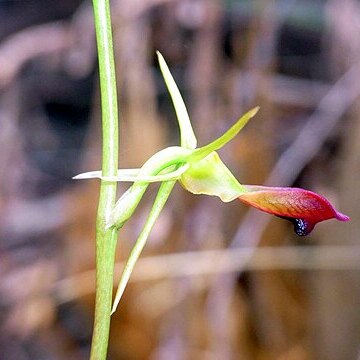An robust orchid. It has thick fleshy roots. The leaves are held erect and are leathery. They are up to 15 cm long by 3 cm wide. They are yellowish-green. The flower stalk is 80 cm long and has 3-20 flowers. Each flower is about 2.5 cm long. The flowers are green with brownish or reddish tinges. The tongue (labellum) is folded and reddish-purple.

